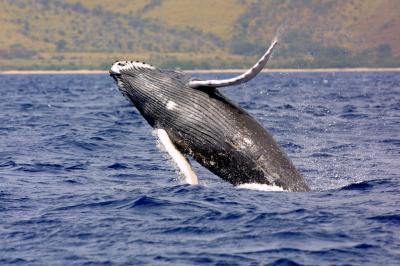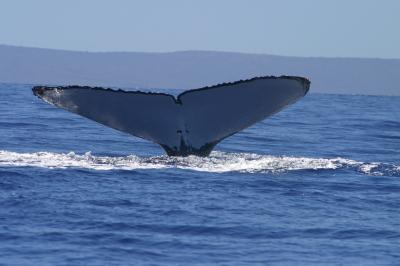
More Humpback Whales in North Pacific Than Thought

More humpback whales are swimming in the waters of the North Pacific Ocean than previously thought, an analysis of the largest ever humpback whale survey finds.
The number of North Pacific humpback whales in the 2008 study known as the Structure of Populations, Levels of Abundance and Status of Humpbacks, or SPLASH, was estimated at just under 20,000 based on the initial look at the data. But the new research puts the number at over 21,000 and possibly even higher.
"We feel the numbers may even be larger since there have been across-the-board increases in known population areas and unknown areas have probably seen the same increases," said Jay Barlow, marine mammal biologist with the National Oceanic and Atmospheric Administration's (NOAA) Fisheries Service at the Southwest Fisheries Science Center in La Jolla, Calif.
The boosted population numbers are a far cry from the scant 1,400 humpback whales estimated in the North Pacific Ocean at the end of commercial whaling in 1966.

"While populations of some other whale species remain very low this shows that humpback whales are among those that have recovered strongly from whaling," said John Calambokidis, senior research biologist and co-founder of Cascadia Research, a non-profit organization based in Washington and focused on marine mammal studies.
The SPLASH research was a three-year project begun in 2004 involving NOAA scientists and hundreds of other researchers from the United States, Japan, Russia, Mexico, Canada, the Philippines, Costa Rica, Panama, Nicaragua and Guatemala and was the first systematic survey ever attempted to determine the humpback whales' overall population, structure, and genetic makeup in the North Pacific. The new estimate comes from a refined statistical analysis of the SPLASH data.
Researchers were able to quantify the number of humpback whales by photographing and cataloguing over 18,000 pictures of the animals' tail, or fluke, because the pigmentation patterns on the fluke act like a fingerprint and are unique to each animal.
Sign up for the Live Science daily newsletter now
Get the world’s most fascinating discoveries delivered straight to your inbox.
Scientists determined population numbers by comparing photographs taken in northern feeding grounds (around the Pacific Rim from California to Kamchatka) compared with matches of the same animals in the warm tropical waters of southern breeding areas as far as 3,000 miles (4,800 kilometers) away. [Related: The Greatest Migration on Earth]
This story was provided by OurAmazingPlanet, a sister site to LiveScience.










